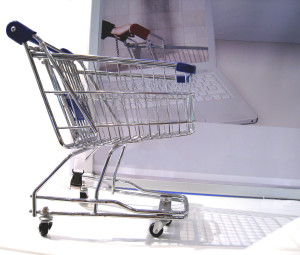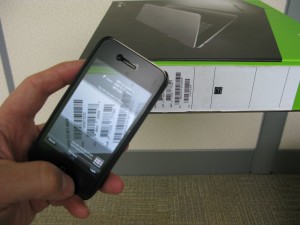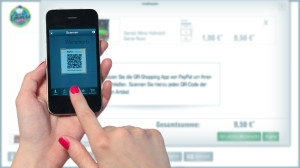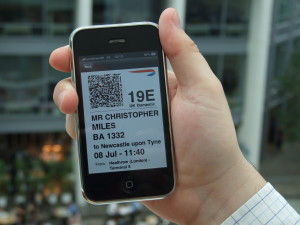Category: e-commerce & m-commerce
October 22nd, 2013 by Elma Jane
The best place to start understanding your customer is to put yourself into every step of a buying cycle and analyze what influences various purchase decisions.
Who is your customer?
Basic demographics and usually includes the following:
Age range Education level Gender Income level Location Marital status Profession
Many of these basic demographics can be inferred from your interactions with customers. In many cases, you can simply ask them.
Beyond the basics, you will also benefit from more personal data, such as the following:
Interests Activities Political affiliation
That data is harder to access, but there are databases that will allow you to target individuals based on those criteria. Facebook’s ad platform provides an incredible amount of targeting data. You can infer your customer profiles by the types of results you get by running ads aimed at specific target markets. That will help identify the interests of your customers.
What? consider what consumers need to know about a product to make a purchase.
Are there ongoing costs? Does it need anything else to make it work? How big is it? How does it function? How long will it last? How much does it cost? Is there a warranty? What are its specs? What does it look like? What options are there? What sizes and colors are available?
To find those details, shoppers will seek different sources: articles, websites, blogs, and actually looking at products and trying them on. Make sure you understand the “what” questions for your products. Then, provide answers to those questions.
Why? The “why” questions are important. Do you know why your customers buy your products?
It could be for the following reasons.
Address an immediate need or desire. Loyal to a particular brand or store. Need flexibility to return products. Need product occasionally or on a regular schedule. Purchase because product is cool or trendy. Seek bargains. Seek high-quality products Seek little or no shipping or sales tax. Seek the lowest price possible. Shop around every time they buy.
Answers will surely vary. Consider also, what motivates your customers to purchase the products you sell and also why they purchase them from your company versus your competitor. This will help you better refine your value proposition of why shoppers choose your company.
How? This area is the most significant change in a consumer’s shopping cycle. As recently as 15 years ago, most product research was done in stores or catalogs or magazines. Today, product research is done in many ways. In the living room, in the boardroom, at the hospital, you name it. Most shoppers start their search at Amazon.com or on Google by searching on a product.
Many searches start with an opportunistic email promoting a product. From there, we may find the shopper looking at the item on that store’s website.
Consumers likely check product reviews, from other consumers. They may read professional reviews. Browse the Internet on SmartPhone.
The point is to understand your customer’s research process. It will vary widely. But in many cases it’s something like this.
An event triggers an interest in a product. Check other brands or alternative products. Conduct research by looking at a product’s pictures, reading descriptions. Evaluate the product’s real value, and eventually make a purchase decision. Narrow your selection and shop for price. Seek out reviews or ask friends.
Where? That leads us to the where customers are researching. They could be reading relevant blogs, going to brick and mortar stores, checking comparison shopping engines, and reading trade publication articles. They may be looking at Pinterest boards, Facebook posts, and checking with their network of friends on Twitter.
They will be using tablets (increasingly the shopper’s preference), smartphones, laptops, desktops, Xboxes, and store visits.
Can an ecommerce merchant be in all of these places with your message? Likely no. But you can identify where your customers are looking for information as they move through their cycle and try to make sure you are seen. You can also ensure that your messaging and content are mobile friendly.
To compete in the future, your store needs to provide input and information to support all those steps. If you lack reviews, your customers will seek them out elsewhere.
Most ecommerce merchants can describe their customers in a general way. They likely know basic demographics – age range, gender, income level. But, do they understand the “why, where, when, and how” their customers make their purchases? These basic tenants of marketing are more important than ever.
The buying process has never been more complex. Consumers have hundred of places online to purchase products that meet their needs. They may shop at home, at work, in the grocery store. They may be using an Android phone, an iPhone, or an Xbox.
Posted in e-commerce & m-commerce, Electronic Payments, Internet Payment Gateway, Mobile Point of Sale, Point of Sale, Smartphone Tagged with: alternative, Android, brick and mortar, comparison, competitor, consumers, content, costs, customers, cycle, data, databases, desktops, ecommerce, Facebook's, flexibility, Iphone, laptops, leads, Merchant's, mobile, ongoing, online, phone, pinterest, platform, price, product, profiles, purchase, selection, shop, shoppers, smartphone, store's, tablets, target, trigger, value, websites, xbox
October 18th, 2013 by Elma Jane
All Alerts, All The Time
Will mobile payment apps hail the arrival of mobile interruptions that never let up? Consumers worry that adopting a mobile wallet app will open them up to a barrage of alerts, sounding the alarm every time the local supermarket has toilet paper for half-off. The services can even track your purchases, opening the floodgates for targeted ads. Frequent alerts could be a deal breaker.
Battery Woes
As smartphones gets bigger, badder and more powerful, battery technology is struggling to keep up. That’s a problem if you want to make a call — but it could be an emergency if your smartphone is your wallet, too. Users are already scrambling to find a charging outlet by lunchtime. Soon, failure to recharge might mean you lack the funds to buy lunch in the first place. Meanwhile, credit cards never need a battery boost, and paper money has worked faithfully since well before the invention of the light bulb.
Do I Have The Right Phone?
You’re ready to make a mobile payment — but is your smartphone? Only the most popular new Android and Windows smartphones have NFC support to enable tap-to-pay services, and Apple has decided to forgo NFC altogether with its iPhone handsets. Users of budget smartphones are likewise out of luck. And though smartphones may seem ubiquitous, only a little more than half of U.S. adults have one.
Is It Secure?
Mobile payments open up a whole new frontier for fraudsters — or so cautious consumers worry. In fact, tap-to-pay technology is as secure as swiping a plastic bank card, and cloud services like PayPal Here support two-factor authentication for extra reassurance. Still, consumers worry their personal information could be intercepted during a transaction, and not everyone is convinced that Google can provide the same level of protection as their bank. But hope remains. The survey found about half of the most security-conscious respondents were much more likely to be interested in mobile payment options if they could be promised 100 percent fraud protection.
Limits, Limits, Limits
Even with a glut of mobile payment options, most lack at least one critical feature. Google’s Wallet app lets you stow your payment information in your phone to buy items in brick-and-mortar shops, but its touch-to-pay functionality is limited to Android devices on Sprint and other smaller carriers. Last year, Apple introduced Passbook, a mobile wallet app that lets users store gift card credits, loyalty card information and more on their iPhones — but only a handful of participating businesses support the app. The mobile payment model isn’t just fragmented — it’s fundamentally limited by countless companies competing for an ever-smaller piece of the pie.
Mobile What?
A recent CMB Consumer Pulse survey showed about half of smartphone users have never even heard of mobile payments. And of the 50 percent who have, a meager 8 percent said they’re familiar with the technology. Banks, credit card companies and others hoping to cash in on consumer interest will have to invest in better messaging first.
What Are The Perks?
Credit cards come with alluring perks — signing bonuses, cash back and travel accommodations, to name a few. But mobile payment systems have serious benefits. They can utilize GPS technology to direct you to deals, keep tabs on your bank account to alert you when you’re near your spending limit, and store unlimited receipts straight to the cloud. Businesses profit from mobile wallets, too, which often charge lower fees than credit card companies and encourage return trips by storing digital copies of loyalty cards.
What’s In It For Me?
To convince consumers to abandon trusted payment options for something new, companies must strike an undeniable value proposition. In the late ‘90s, electronic retail giants like Amazon compelled consumers to enter their 16-digit credit card numbers into online portals, opening up a whole new world of convenience with online shopping. But today’s consumers aren’t convinced that mobile wallets are any more convenient than their physical counterparts. Credit and debit cards already offer a speedy, reliable way to pay on the go. And since they’re accepted virtually everywhere, customers can fork over a card without worry or confusion. Convincing people that new technology is worth their time and effort might ultimately be the toughest nut to crack for mobile payment purveyors.
Where’s The Support?
Even the most enthusiastic adopters are out of luck if their favorite shops lack the infrastructure to process mobile payments. Big-box retailers sprang up in the infancy of computer technology, so joining the mobile payment revolution could necessitate updates to check out hardware and software. Mobile payments could be a boon to businesses, but installing the upgrades could be expensive and disruptive — especially when consumer interest remains low.
Which to Pick?
Even curious consumers are confounded by the array of mobile payment options available. Google, Visa, MasterCard and even mobile carriers like Sprint and Verizon are among the heavy hitters on the mobile payment scene, each offering a discrete service with different apps — and different rules. Some rely on Near Field Communication (NFC) technology that lets users simply tap their smartphone against a special reader to pay, while others offer up scannable QR codes. Mobile payments may never take off until one company rises above the rest with a single killer service.
Forget about cash or credit. In 2013, consumers can simply swipe or scan their smartphones at the checkout to pay. A huge array of mobile payment services have sprung up in recent years, urging customers to abandon their plastic credit cards for the “mobile wallet” revolution, but so far, adoption of mobile payment technology has been dismal.
Posted in e-commerce & m-commerce, Electronic Payments, Gift & Loyalty Card Processing, Internet Payment Gateway, Mobile Payments, Mobile Point of Sale, Near Field Communication, Smartphone Tagged with: alerts, Android, Apple, bank card, battery, cautious, consumers, crack, credit cards, deal, digital, fraud, gift card credits, google, GPS, information, Iphone, lower fees, loyalty cards, mobile, nfc, online, options, paper money, Passbook, payment, PayPal, personal, phone, plastic, portals, powerful, protection, purchases, secure, Smartphones, sprint, storing, support, Swiping, Tap to Pay, touch-to-pay, track, two-factor authentication, wallet, windows
October 17th, 2013 by Elma Jane
You find a good deal online, and as you hastily proceed through the checkout, something goes wrong.
After typing in your name, address and credit card number, you mis-key a digit of your credit card number. The transaction doesn’t go through. The screen seems to yell at you. START OVER. You feel like yelling back.
You have to get to a meeting, so you close your browser and vow to revisit the process later or – worse – try booking the flight on another travel site.
Cart abandonment is a well-known problem for merchants trying to sell goods to online shoppers, and it is even more pronounced when the shopper is using a mobile device.
Travelocity was seeing far too much of it, so the online travel booking site turned to Jumio for a solution.
Travelocity’s deployment of Netswipe, Jumio’s credit card scanning and validation tool, provided the basis for discussion in a recent webinar, “How Travelocity Increased Conversion, Engagement on its Mobile Apps,” sponsored by Jumio and hosted by Mobile Payments Today.
The best webinars look at use cases, said Anthony Lanham, Jumio senior vice president for North American sales, and Travelocity’s experience with Netswipe provides a great example.
Travelocity’s problem was straightforward, the online travel agency’s director of engineering. The site is a common destination for people looking for just-in-time bookings, he said. They need it right now.
And with shoppers increasingly accessing the site from mobile devices, there was this pattern. The user doing a last-minute booking is in a hurry. When you’re in a hurry with a small screen, there’s a decent tendency to ‘fat-finger’ and make key-entry errors. The transaction fails, and that becomes frustrating for the user in a hurry.
A Jumio consumer mobile insight study found that a majority of respondents find it too difficult to fill out forms from a mobile device. And if a purchase doesn’t go through, they almost never go back to try again.
They may come back and finish later, but if it’s Travelocity, the door is now open to go to Expedia and book that flight or hotel.”
Netswipe is designed to remove the burden of entering card details. The solution lets users snap a photo of their card with the camera on their mobile device and present it at checkout, removing the need to self-enter.
In the case of Travelocity, when users reach the mobile site’s checkout page, they see an “autoscan with camera” option in the billing header. They hold the card in front of the camera, which scans it and provides the necessary details to the site. The process takes about five seconds.
To test the solution, Travelocity first implemented it on its sister site, LastMinute.com. Adding the software development kit to the LastMinute.com app was simple and early adoption was larger than the company anticipated. That early success led to quick integration of the app on the flagship Travelocity site.
Checkout conversion rates there also increased much more quickly than anticipated. Over two months, customers using the card scan feature converted at 52 percent, compared to 9 percent for other customers. “The data made it clear that ease of entering payment information was the main reason.”
Though Travelocity’s challenge centered on customer conversion and engagement, Netswipe also acts as a fraud deterrent.
Fraudsters always take the path of least resistance and any decent fraudster can get their hands on the name and number and expiration date that match. But once you get to the point of asking that fraudster to put a bona fide card in front of a camera, you are going to instantly cut out a huge swath of fraudsters. For them to take that information and actually translate it on a physical card that would pass muster for the checks that we do is an enormous task. They can go monetize those fraudulent credentials elsewhere easily.
Moharil offered a few lessons from the integration. First, he said, it’s important to measure, and to continue measuring often. For example, are users checking out the feature out of curiosity or are they using it to complete transactions? And it’s important to plan for backward compatibility – making sure earlier versions of the Jumio SDK and Travelocity app don’t have glitches.
Moharil advised rolling out a new solution along the simplest path, in a small use case, early results for Travelocity have been so good, he only wishes the solution were implemented sooner.
The webinar concluded with a short question-and-answer session. The free webinar is now available for Online Replay, and will remain on the Mobile Payments Today site for 12 months.
Posted in Best Practices for Merchants, e-commerce & m-commerce, Travel Agency Agents, Visa MasterCard American Express Tagged with: autoscan with camera, billing, booking, cart, checkout, conversion, credit-card, data, device, digit, fraudster, key-entry, merchant, mis-key, mobile, online, shoppers, site, transaction, travel, travel agency's, travelocity, webinar
October 11th, 2013 by Elma Jane
(Moto) Mail Order/Telephone Order Merchant – In the realm of credit card processing is defined as a merchant who manually keys in over 50% of their transactions and an Internet Merchant is one who accepts transactions over the Internet via an E-Commerce store with an online gateway or who submits transactions manually through a Virtual Terminal.
Qualified Transaction Conditions (For MOTO/Internet merchants the Mid-Qualified Rate is essentially the Qualified rate as these merchants never swipe a credit card through a terminal.)
One electronic authorization request is made per transaction and the transaction date is equal to the shipping date. The authorization response data must also be included in the settled transaction.
Additional data (sales tax and customer code) is required in the settled transaction on all commercial (business) cards at non-Travel & Entertainment (T&E) locations.
The authorization request message must include Address Verification Service (AVS), which verifies the street address and the zip code of the card holder. NOTE: The only way this happens is if your software is set up to do this, or, if you are using a terminal, then if you capture the AVS information at the time of keying in your transaction.
The settled transaction amount must equal the authorized amount.
The settled transaction must include the business’s customer service telephone number, order number, and total authorized amount.
The transaction is electronically deposited (batch transmitted) on or 1 day after authorization date.
The transaction/shipping date must be within 7 calendar days of authorization date.
Non-Qualified Transaction Conditions
One or more of the Qualified or Partially Qualified conditions were not met.
Commercial Card without the additional data.
The transaction was not electronically authorized or the authorization response data was not included in the settled transaction.
The transaction was electronically deposited (batch transmitted) greater than 1 day from transaction/shipping/authorization date, or:
The VISA Infinite card was accepted.
Commercial Card Additional Data
MasterCard
Corporate Data Rate II (Purchasing cards): Sales Tax and customer Code (supplied by cardholder at point of sale) Corporate Data Rate II (Business and Corporate cards): Sales Tax International Corporate Purchasing Data Rate II: Sales Tax and Customer Code (supplied by cardholder at point of sale)
The following information must also be provided: Merchant’s Federal Tax ID; Merchant Incorporation Status; and Owner’s full name if the merchant is a sole proprietor.
Visa
Purchasing cards: Sales Tax and Customer Code (supplied by cardholder at point of sale) Corporate and Business cards: Sales Tax
Posted in Credit card Processing, e-commerce & m-commerce, Electronic Payments, Internet Payment Gateway, Mail Order Telephone Order Tagged with: address verification service, authorization, avs, batch, business, corporate, credit card processing, data, e-commerce, electronically, entertainment, fax order, gateway, internet, internet merchant, keying, mail order, moto, phone order, qualified, settle, store, telephone order, transactions, transmit, travel, virtual terminal
October 11th, 2013 by Elma Jane
U.S. Bank and Monitise will develop a mobile shopping experience that includes product selection and instant checkout payment capabilities. Leveraging digital and audio watermarking and scanning technology for product discovery, an initial pilot will integrate mobile action codes, mobile shopping and mobile payments.
Mobile money solutions provider Monitise and U.S. Bank announced an agreement to accelerate the delivery of a product discovery and shopping service that the companies say will make it easier for top-tier retailers to help consumers interact with and buy from leading brands via mobile.
“Technology is creating new ways to bank and buy, and U.S. Bank is committed to playing a leading role in the digital commerce revolution as money becomes more mobile,” developing mobile money services has been a key focus for the company.
“As mobile technology accelerates the convergence between the offline and digital worlds of banking, payments and commerce, banks are identifying new revenue streams and driving value for both retailers and consumers,”
Posted in e-commerce & m-commerce, Electronic Payments, Financial Services, Mobile Payments Tagged with: banking, banks, checkout, convergence, electronic, etailers, mobile, mobile action codes, mobile shopping, money, payment, Scanning
October 10th, 2013 by Elma Jane
Amazon has launched a service that enables its customers to pay on other e-commerce sites via their Amazon account data. Called ‘Login and Pay with Amazon,’ the service sells payment processing for participating retailers.
Amazon has more than 215 million active customer accounts. The Amazon payment service works on personal computers, smartphones and tablets. Site developers employ Amazon widgets and APIs, or application programming interfaces.
Login and Pay with Amazon enables companies to make millions of customers by inviting online shoppers with Amazon credentials to access their account information safely and securely with a single login. Login and Pay with Amazon helps replace guest checkouts with recognized customers, leading to improved services which could include: managing and tracking orders, purchase history detail, special discounts, instant access to shipping addresses and payment methods.
Amazon previously called its payment service Checkout by Amazon, but rebranded it Amazon Payments. In May, Internet Retailer wrote about Autoplicity.com’s experiences adding the Amazon payment tool.
Amazon says it will not share customers’ credit card information gained via the payment tool, and that it will cover purchases made through the service in the same way purchases are covered from Amazon.com.
“This [newly launched] service is more of a repackaging of Checkout by Amazon than as something new,” says a payments industry analyst. “Amazon has been a challenger to PayPal for some time in the Internet payments arena, but PayPal has the dominant market share. One key reason is that PayPal is not viewed as a direct competitor to the merchants it serves while Amazon often is.”
PayPal, part of eBay, is the clear leader in so-called alternative payments, used by 84% of consumers who pay online with alternatives to payment cards, according to a report earlier this year from Javelin Strategy & Research. The report, based on a 2012 survey, also showed that 42% of consumers pay with credit cards when making online retail and travel purchases, up from 40% in the 2011 survey, and 29% pay with debit cards, down from 30%.
The new Amazon service is a “great deal” more than a warmed-over Checkout.
He points out that the number of Amazon’s active accounts is much more than the active users of all eBay’s payment services. Including consumers with PayPal or Bill Me Later accounts, that base totaled 132.4 million in the second quarter, up nearly 17% from 113.2 million a year earlier, according to eBay. And Amazon’s customers trust the security of making payments through the e-retailer, and have grown accustomed to the convenience of doing so. Amazon is No. 1 in the Internet Retailer.
For e-retailers, it’s yet another payment method they might want to evaluate. “Amazon is a damn big brand. If you bring that many users along with [the payment service], then e-retailers will give it serious consideration. It will give PayPal some competition.
Posted in e-commerce & m-commerce, Electronic Payments, Mobile Payments, Mobile Point of Sale, Smartphone Tagged with: Amazon, amazon.com, api, application programming interface, checkout, credit cards, customers, debit cards, e-commerce, e-retailer, ebay, internet retailer, online, orders, payment methods, payment processing, payment service, PayPal, purchase, shoppers, travel purchases
October 1st, 2013 by Elma Jane
Google announced Wednesday that it is opening its Google Shopping Express service to shoppers in the entire San Francisco Bay Area, marking the official launch and first big expansion of the company’s same-day delivery service. Google began testing the retail delivery service this year among a limited set of invited consumers in a few areas within the Bay Area, but the new announcement extends the service to anyone in an expanded region ranging from San Francisco to San Jose. With the service, online shoppers can place online orders from several chain stores and have those products delivered within the day.
Also on Wednesday Google released an app for iOS and Android that allows users to browse the shopping sites and order products directly from their smartphones. New users who sign up before the end of the year can get six months of free, unlimited delivery service; it costs $4.99 per store order.
Race to Deliver
Google is not the only company to experiment with the same day delivery offerings. Walmart and eBay are both testing similar services…eBay now even offers the delivery within an hour, although consumers can only shop from a single store. Amazon is also following in the footsteps of companies like Fresh Direct and rolling out same-day deliveries on groceries to consumers in Los Angeles and Seattle. Google understands that it will have tough competition in the space and can afford to take a loss on the service at first, which is why it is offering the service for free for new users, said an e-commerce consultant. It is evident from the low price and free sign-up offer that Google is not interested in making money in the short term, that will come once there is a widespread adoption of their service…
A Lot of Challenges Ahead
Although Google is not a retail hub at its core, the company has other strenghts that could help it gain an advantage over its competitiors. Being a default search provider for many millions of users on all platforms, from desktops to tablets right through to mobile phones, can give Google an edge over Amazon and eBay.
Still the key element to a successful e-commerce platform is logistics. Google might have deep pockets and effective algorithms, but it has a a lot of cathing up to do to make sure its delivery service could compete with those of companies like Amazon and eBay, which have years of experience delivering products to consumer worlwide.
“Google certainly has the stamina and budget to give it a good run, but there are a lot of moving parts”. Being a big data company doesn’t automatically mean you’ll be good at the logistics, so they’re going to have a lot of challenges ahead.
Posted in Credit card Processing, e-commerce & m-commerce, Electronic Payments, Merchant Account Services News Articles Tagged with: Amazon, Android, app, delivery, desktops, e-commerce, ebay, google, iOS, mobile phones, online, platforms, shopping, tablets, walmart
September 30th, 2013 by Elma Jane
Facebook this week began testing a new feature dubbed “Autofill with Facebook” that aims to simplify mobile purchases by filling in customers’ credit card information for them, thus eliminating the need to type it in each time. This “Autofill with Facebook gives people the option to use their payment information already stored on Facebook to populate the payment form when they make a purchase in a mobile app,” Facebook spokesperson told the E-Commerce Times. “The app then processes and completes the payment.” The feature “is designed to make it easier and faster for people to make a purchase in a mobile app by simply pre-populating your payment information.”During the test period, which began Monday evening, the feature will show up only to Facebook users who have already provided credit card information to the social network — in other words, those who have made in-game purchases or bought gifts for friends.
Facebook has partnered with PayPal, Braintree and Stripe as financial partners on the service, which is initially available only on the e-commerce iOS apps JackThreads and Mosaic.
Ironing Out the Wrinkles Autofill with Facebook isn’t a move to compete with PayPal and credit card companies, but to complement payment services by adding a layer for convenience, much the way Facebook, Google and Amazon have created a single login that works across a network of websites.
“Facebook is not interested in being a payments company,” an analyst, told the E-Commerce Times. “Instead, it is aiming to be the entity that irons out bumps in the payment process — something it is well-positioned to do. “With Autofill, Facebook will act as the lubricant that makes the commerce experience more seamless, providing a number of benefits to all stakeholders.”
Partners in the deal ensure that Facebook will succeed in Autofill with Facebook, it doesn’t care about payments, it cares about reaping the benefits that come from making the payment experience better.”
‘The Potential to Be Lucrative’ There could be significant financial benefits as well. “This approach has the potential to be lucrative for Facebook in that it will help plug the mobile conversion gap,” McKee suggested. “If Facebook can prove to its partner merchants that an ad on its site led to a purchase, the validity of its platform can easily be proven. Ideally, this will help convince other companies to advertise with Facebook as well.”
Taking it a step farther, Facebook will also gain transaction data, which McKee believes has considerable value. “Facebook can leverage transaction data with what it already knows about us for precision ad targeting. This will increase the relevance and placement of ads on Facebook.”
The Security Factor While many mobile customers will appreciate the Autofill function, security issues still lurk in the back of every consumer’s mind. Yet while privacy concerns have been an ongoing issue for Facebook, it has a good track record where security is concerned. “Facebook has been relatively incident-free when it comes to security breaches.” “However, this is more a problem of consumer perception. Will consumers feel comfortable storing their payment credentials with a social media platform?
“Facebook is already approaching ‘big brother’ status, and this takes it one step further.” “To succeed, Facebook must provide visibility into what it plans to do with transaction data.”
‘It’s a No-Brainer’ The convenience factor, meanwhile, could be a compelling one for consumers. “It’s no-brainer useful to mobile users…who wants to enter their credit card on a mobile phone more than once?” “It could be more secure than mobile payment alternatives.” If Facebook gets past its hurdles, it will also succeed in building strengths in areas where it has been lacking to date.
“Right now Facebook isn’t super strong at the conversion side of e-commerce.” “Autofill will give them a lot of data about purchases, which might help them remedy that.”
‘Strategic Smarts and Ambition’ As for those benefits to Facebook, there are potentially many. One example,”Autofill admits them to the online payments world.”
“This is another example of the strategic smarts and ambition of Zuck.” “One gets the sense that he wants to be a major competitor for everything online.”
Posted in Credit card Processing, Credit Card Security, Digital Wallet Privacy, e-commerce & m-commerce, Electronic Payments, Mobile Payments Tagged with: Amazon, commerce, credit card, e-commerce, Facebook, google, media, mobile, mobile phone, network, payment, payment information, payment services, PayPal, platform, processes, secure, social, transaction
September 30th, 2013 by Elma Jane
Future of Marketing Lies in Mobile Payments…Why?
Marketing and payments might seem like strange bedfellows to the average retailer, but in fact, they are converging rapidly to bring more value to consumers and merchants alike. Here are 10 reasons why the future of marketing is inextricably linked to payments innovation:
1. Cross-Platform Acceptance
Better yet, these targeted offers can be acquired and redeemed through different mediums…online, offline and mobile…and utilized interchangeably. This makes life easier on the consumer and thus makes them more likely to engage with new loyalty and rewards programs. Moreover, as the Internet and mobile solutions continue to merge, the digital “wallets” that many of us use online today (think PayPal) are, logically, moving to our phones. When these payment and marketing applications are accessible from the same device, customers can seamlessly receive pertinent offers and pay for goods at the same time in the same place. Other apps will give consumers the ability to shop in one medium and buy in another, simplifying omni-channel marketing to affect commerce across all channels. This kind of convenience and value is a win for both customer and merchant.
2. Loyalty and Rewards get Simpler
The reality is that it’s much easier to issue and redeem loyalty rewards, gift cards and discounts when they are integrated into the POS experience and don’t require customers or merchants to alter the existing in-store purchase or checkout stream. You can see these simplified applications already in practice at chains like Starbucks, as well as independent merchants that use systems like LevelUp.
3. Merchant adoption
The payment technologies that succeed will be the ones that are ultimately adopted by merchants, which in turn will lead to consumer usage. Key technologies that will likely facilitate widespread adoption of mobile payments…either proactively because merchants want to see what they can offer them, or passively as they upgrade devices…include:
EMV (chip and pin), which will force merchants to update their POS systems, likely catalyzing them to update all points of interaction.
NFC – Cloud Computing – Geofencing – QR Codes and even Basic Bar Codes
4. More Value for Consumers
And for consumers, the convergence of payments and marketing should deliver highly valuable deals, offers, comparisons information and more, ultimately providing drastic improvement of the buying and shopping experience.
5. More Value for Merchants
So what does this value look like? For merchants, the convergence of payments and marketing should bring in new customers, increase sales from existing customers, and provide more customer data. It should also create a more streamlined multi-channel experience so consumers have little barrier to adoption.
6. No Single Technology will Win
These new technologies introduce an interesting question: What should merchants do to prepare for this brave new world where payments and marketing collide? For one, merchants should avoid betting on any one technology. In fact, the POS needs to morph into something a little more complex, becoming instead a POI, where a broad variety of payment types, loyalty programs, coupons and more can be redeemed. Merchants should be in a position to choose what types of payment they want to accept and in what medium, and not be limited to fixed payment tenders.
When the convergence of marketing and payments will happen
The increasing adoption of mobile payments by merchants and consumers, when combined with new POS environments, will jump-start the convergence of marketing and payments. However, we’re still in the early stages.
Mobile commerce technologies are widespread but still working to gain traction from consumers en masse. Additionally, merchants haven’t yet felt the need to upgrade their POS systems to accept mobile payments
However, the October 2015 EMV Liability Shift, a date set by Visa and MasterCard for certain charge-back liabilities to fall to the merchant unless they have upgraded to EMV-capable POS systems, is likely to push merchants to upgrade their systems.
Once merchants begin to upgrade these POS systems, the smart ones will take the opportunity to add more features and functionality to the systems, including the ability to accept payment…and marketing-driven solutions from mobile handsets. That’s when we’ll see the value of two-way communication between merchants and consumers dramatically change the shopping experience and bring payments into the marketing mix.
7. Smartphone Adoption is Speeding Up
Consumers’ mobile phones are already equipped to deliver highly valuable offers, and adoption is increasing at a rapid pace. Smartphones bring with them new app technologies that include not only mobile payments but also loyalty and rewards programs that are designed to drive preference for stores, good and services.
8. Targeted Offers and Single-Use Applications
Of course, these solutions are still in their infancy. Elegant single-use applications, such as mobile wallets and gift cards, will soon grow to provide highly targeted offers that take into account everything from shopping preferences to location, providing incentives as a customer walks the aisle of a store. Just about every player in the payments ecosystem is thinking about these new commerce technologies. The winners will be those that demonstrate clear value for both the merchants and customers.
9. The “POS” is now a “POI”
A point-of-sale (POS) solution used to be a place where goods were purchased and money traded hands. Usually, this took the form of a cash register or credit card machine. Though these still exist, a wave of new value-added marketing services, such as targeted offers, discounts and highly valuable loyalty applications, have led to the transformation of the POS into a point-of-interaction (POI), a place where consumers and merchants meet to exchange value for value.
10. Two-way communication
When embedded in smartphones, new technologies…like near-field communication (NFC), QR codes, geofencing and cloud authentication solutions…allow for two-way communication between the consumer and the POS solution, enabling merchants to deliver coupons and offers directly to customers’ mobile phones through targeted integrated programs.
Posted in Digital Wallet Privacy, e-commerce & m-commerce, Mobile Payments, Mobile Point of Sale, Smartphone Tagged with: bar codes, cloud, device, EMV, handsets, innovation, loyalty, marketing, merchants, mobile, nfc, offline, omni-channel, online, payments, PayPal, phones, POI, point of interaction, POS, qr codes, rewards
September 26th, 2013 by Elma Jane
With revamped iPhone app Travelocity rethinks smartphone bookings
To accommodate for the more gesture-based features in Apple’s new iOS 7, Travelocity rebuilt its iPhone application from the ground up. The online travel agency’s new app is aimed at moving users through the booking process quicker with more visuals. Travelocity has been streamlining all parts of the trip-planning experience with its mobile apps continuously in the past few years.
“Luckily, we have a great, agile team and some top-notch mobile designers, so we were able to dive into the new design as soon as the beta was released. “We also decided early on to rebuild this version from scratch and really work on making it fast and reliable,” said Blake Clark, director of mobile for Travelocity. “We find mobile travelers demand speed and sometimes they’re in less-than stellar connection areas, so that was a big one.”
Streamlined design
Tavelocity updated its iPhone app with a design that highly plays up images and visuals. The app’s home screen shows photos of world cities to inspire consumers to take a last-minute trip. The app also leverages the new AirDrop feature of iOS 7 to let consumers securely share their travel information with friends and family members after they book a hotel.
The new app includes a feature that lets consumers scan their credit cards with a built-in camera feature to cut down on the number of steps that it takes consumers to check out. The technology detects the number on a credit card and automatically fills in portions of the checkout page. The app also highlights Travelocity’s mobile-exclusive offers that take into account a user’s location to serve up relevant offers and deals.
Travel on mobile
Travelocity has been building up its mobile strategy for quite some time with different mobile products and ad campaigns. Most recently, the brand designed its Web site around responsive design, which led to a 6 percent increase in iOS bookings and an 8 percent jump for Android reservations after two month.
Travelocity’s tablet booking experience was also named the best this spring in a study from Mobivity.
Travelocity is the latest example of how iOS 7 has shifted the way that marketers develop mobile apps with more gesture- and touch-based features. “It’s a shift of how Apple customers interact with their devices, and as a leader in the travel space, we wanted to make sure we’re reducing the amount of friction travelers have when booking a trip.” “With the iOS 7 launch, now our app and the device look, work and feel the same; it’s seamless.” Mr. Clark said.
“Travelers can easily access the deep selection and great value Travelocity is known for. Travelocity’s goal – to be a traveler’s trusted companion before, during and after the travel experience.”
Posted in Credit card Processing, e-commerce & m-commerce, Electronic Payments, Mobile Payments, Near Field Communication, Travel Agency Agents Tagged with: agencies, agency, agency's, agent, app, booking, iOS, ios7, Iphone, mobile, smartphone, travel, travelocity









